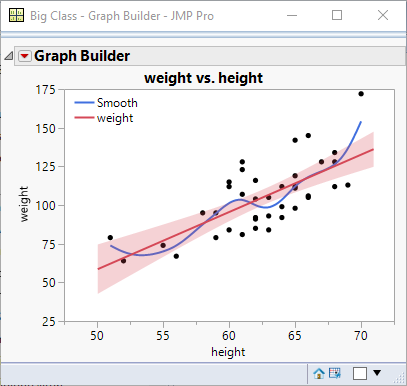

You can decide which method works best for you. A selection of graphing methods will be presented including newer methods available in the more intuitive Graph Builder and Control Chart Builder platforms, as well as instructions for the legacy Chart and legacy Control Chart platforms. There is more than one way to generate many of the graphs in this chapter. For instructions on sharing or printing graphs and on surfacing graphs into other applications such as Microsoft Word or PowerPoint or interactive HTML, see Chapter 7, sections 3 and 4. Statistical output is provided with graphs generated from the Analyze menu.

Some of the graphs illustrated in this chapter are accessed from the Graphs menu, while others are accessed from the Analyze menu. However, we have focused on the steps to generate the base case of each graph, which are illustrated in the figures that accompany each graph.
#JMP GRAPH BUILDER LEGEND ON EACH GRAPH WINDOWS#
You will find that many graph windows have additional options that allow you to further enhance your graphical result. This chapter is for the user who knows what graph they want and can pick it out by how it looks or what it’s called. This chapter is not intended to be a complete index of graphs available in JMP, but we have tried to pick out those that we see used most often. A picture of the graph, brief description, required data conditions, usage description, and the steps required to generate the graph immediately follow.

In this chapter, you can peruse the graphs much like you’d look through a cookbook-find what you want and follow the recipe. The format of this chapter differs from other chapters for good reason. This chapter is a quick reference to commonly used graphs in JMP. JMP Essentials: An Illustrated Guide for New Users, Second Edition (2014) Chapter 3.


 0 kommentar(er)
0 kommentar(er)
